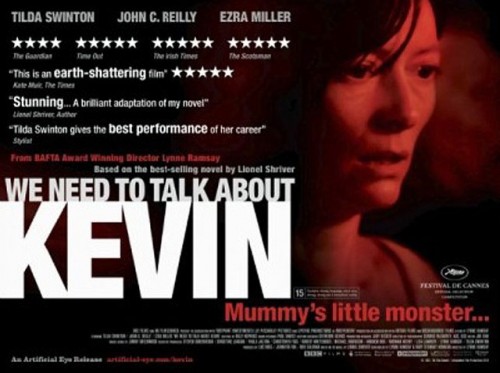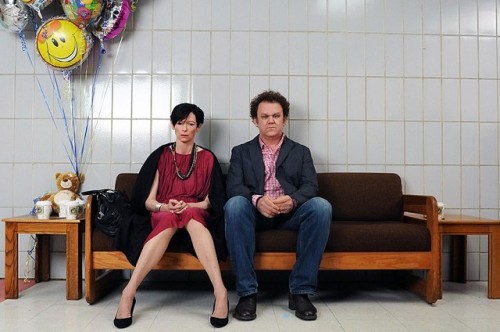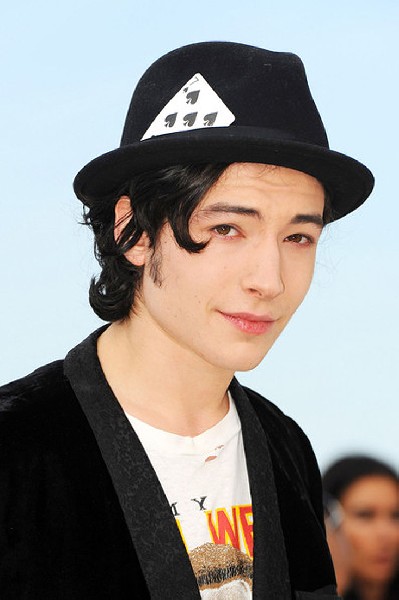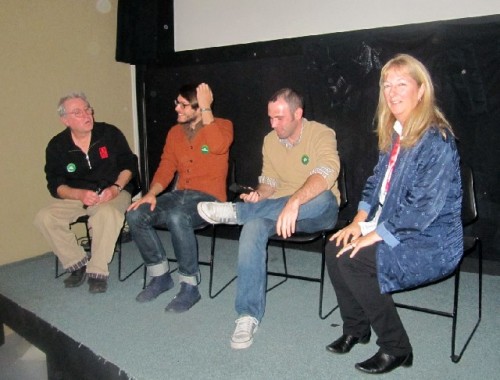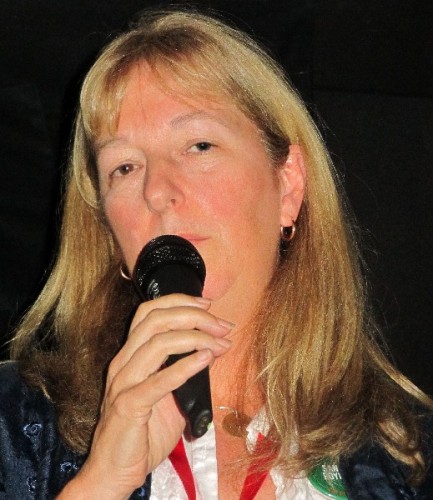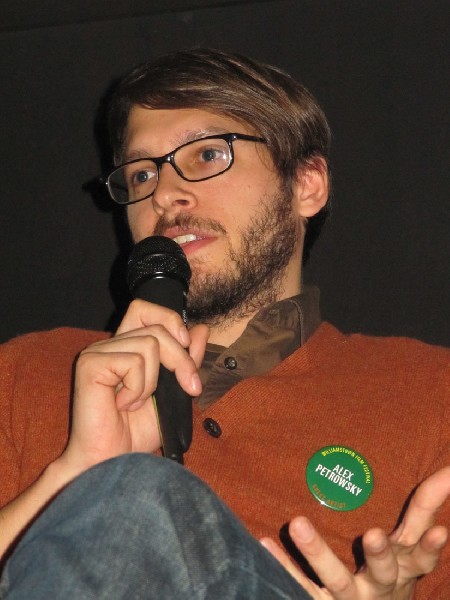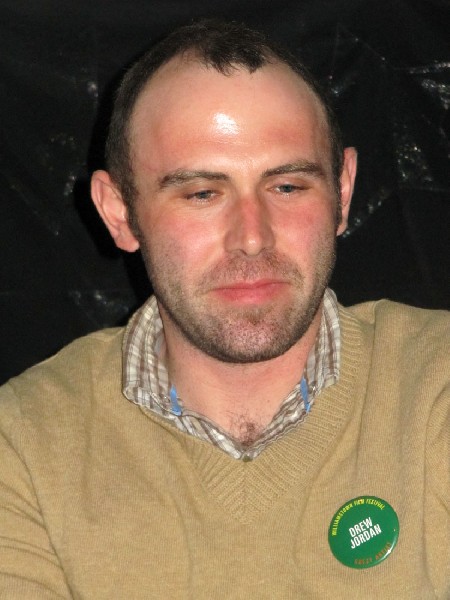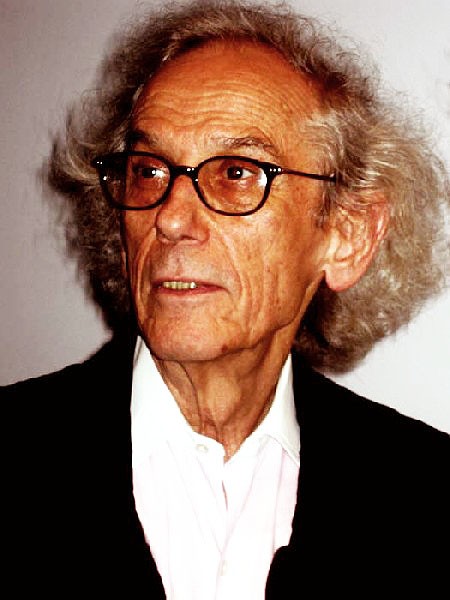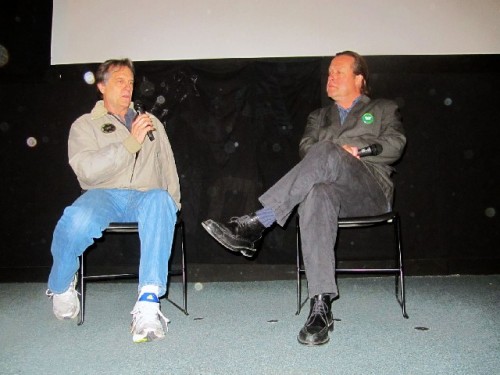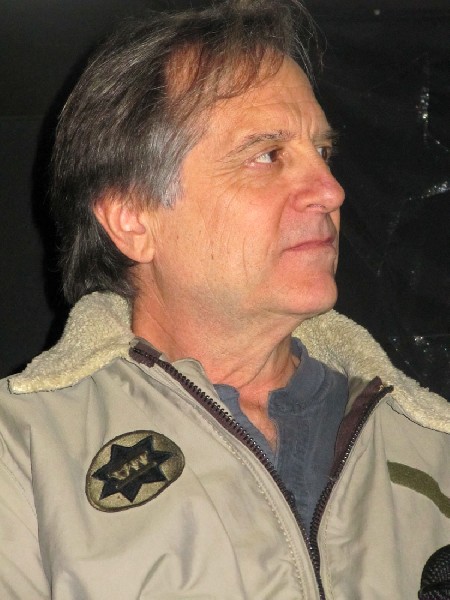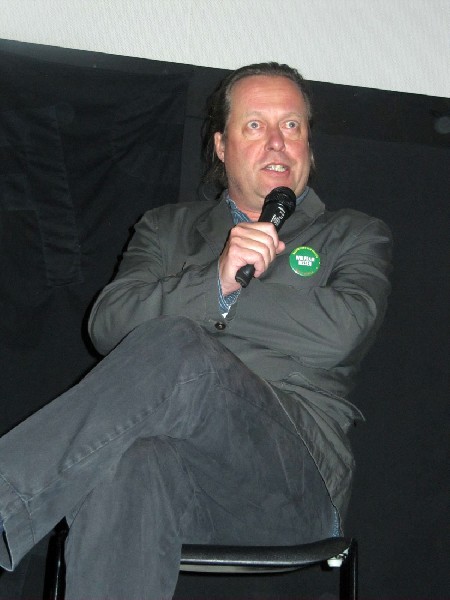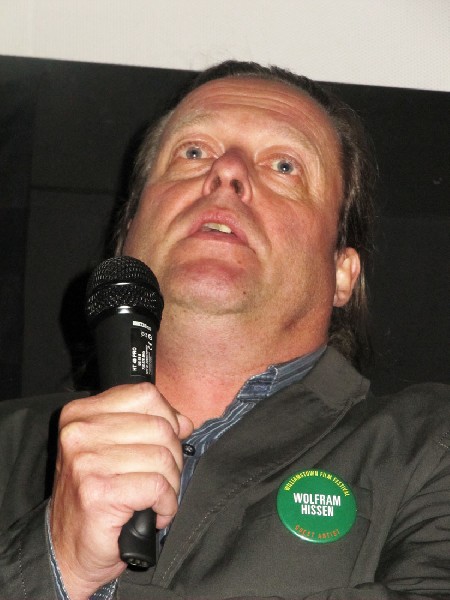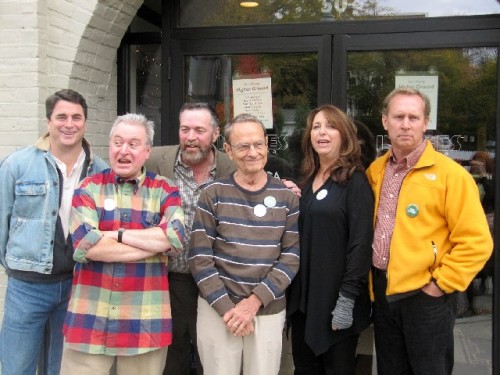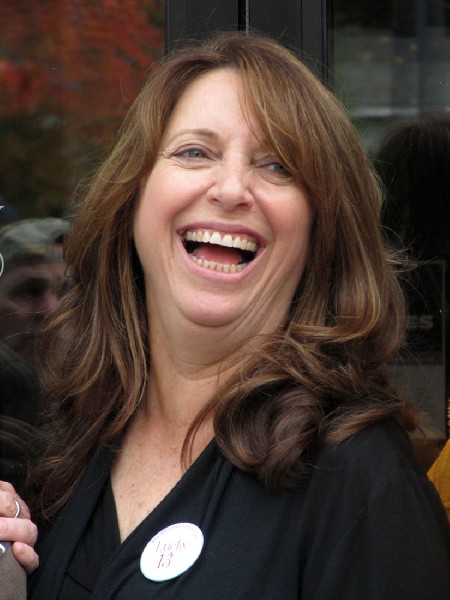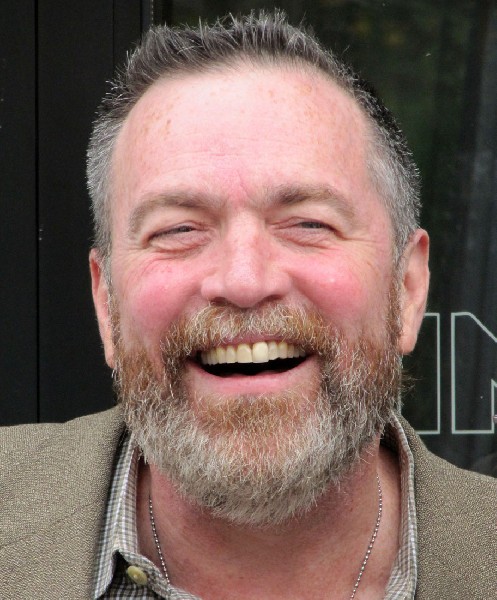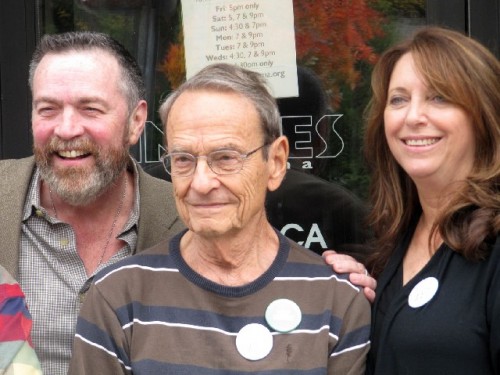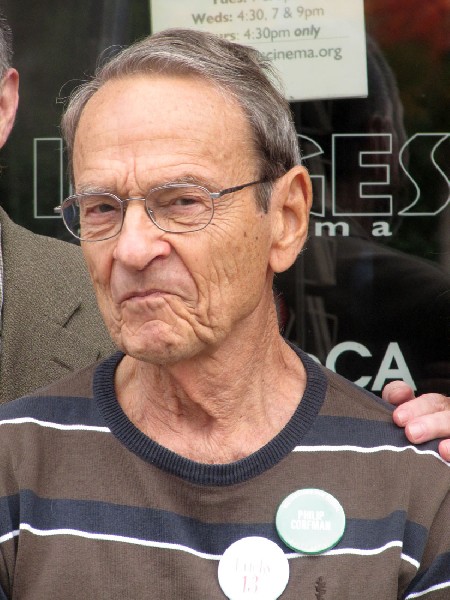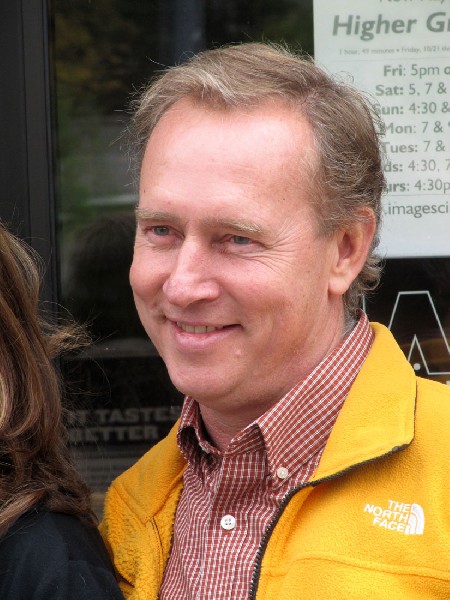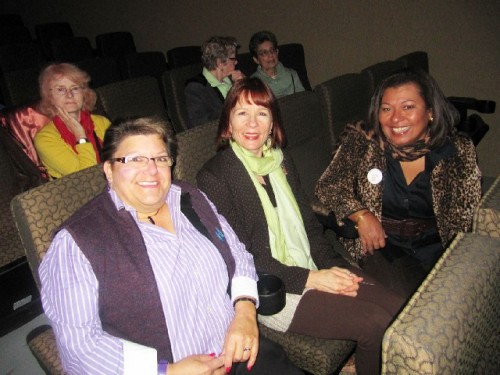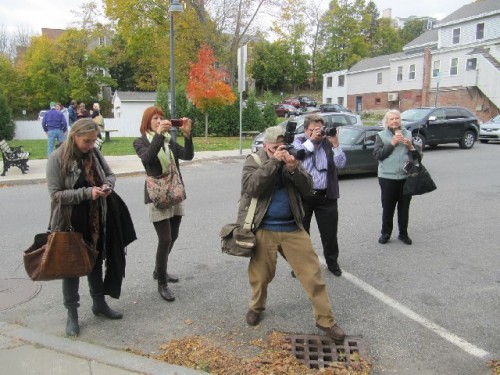Williamstown Film Festival 2011
The First of Two Weekends
By: Charles Giuliano - Oct 24, 2011
After three days and nights in the dark there is much to sort through in the particularly rich, varied, fertile and provocative 13th annual Williamstown Film Festival curated by its tasteful and insightful artistic director Steve Lawson. The Festival runs from October 21 to 29.
There are many unique and compelling highlights as well as ephemeral experiences that fade away all too quickly.
That was particularly relevant in the popular annual feature The ALL-SHORTS Slot which occurred on Saturday afternoon. Nine short films were screened. After each the house lights were raised long enough for us to circle ballots from one through five. Then we dove into the next film. At the end of the festival ballots are tallied for the annual Reeve Award.
In addition to that all shorts program one or two are screened prior to feature length films. During the run of two weekends we get to see 21 short films. Other than festivals there are few such opportunities to appreciate this genre of film.
They primarily represent works by emerging filmmakers and actors. Often it is the stepping stone from academic film programs to becoming established professionally. Lawson is deeply knowledgeable about this genre. That was reflected in his comments that a particular director has been included in prior festivals. There is a kind of career tracking when he states that “I can’t wait to see a feature film” by this or that individual.
Of course the logical next step is to shoot a low budget independent film and hope to generate enough buzz in the rounds of many film festivals. That creates the potential to evolve into distribution deals or work with a major studio.
Often that equates to a low tech, hand crafted sensibility to the material. Following screenings Lawson engages in a dialogue with those involved including questions from the audience. This is one of the most welcome aspects of the WFF experience. Hearing what those involved and the audience have to say about new works.
That was particularly important on Saturday night when the festival moved from the small screen of Images Cinema in Williamstown to the larger capacity of the Hunter Center at Mass MoCA.
Following the screening of We Need to Talk About Kevin, directed by Lynne Ramsay based on the novel by Lionel Shriver, we were shocked, assaulted and traumatized. At the risk of being redundant it is a film which one really needs to talk about.
In this case, however, the two discussants, in addition to Lawson, Peter Marshall, of DeWitt Stern Group a law firm that sponsored the evening, and Shawn Rosenheim, a professor at Williams College, were not directly connected to the film.
That was particularly evident when the discussion was opened to the audience evoking emotional, negative flashback. This was a response to a focus on the remarkable performance of Tilda Swinton, as Eva Khatchadourian, the mother of her psychotic son Kevin, who enacts a Columbine-like rampage. The discussants implied her as primarily responsible for spawning and nurturing the evil child who takes many emotional clues from her. That induced spontaneous shouts of protest from some women in the audience.
One yelled out response was "Don't always blame it on the woman."
With some ironic humor it led Rosenheim to blurt out that “I know some of you hate me.” To explain this he added that he has four children and accordingly knows what that feels like and where it comes from.
This devolved into an unproductive and emotionally charged blame game. What started as a question from a young woman morphed into an uninterrupted statement. In a rambling manner she informed us that she was in high school not far from Columbine when that tragic event occurred. Clearly it had a direct and traumatic impact on her.
If the intent of including the film in the festival was to take on difficult, emotionally charged, thought provoking material then it was entirely successful. But the post screening dialogue left me feeling disappointed and frustrated. The egocentric professor was a poor choice for this occasion. Perhaps in the controlled environment of the classroom he might have been successful. But this film experience hit a raw nerve with the audience and arguably a woman’s voice and opinion would have been a better and more effective strategy.
What resulted was more about venting than the deep critical dialogue that the film required.
The most important point that was never raised entailed the film as fiction and a work of art. The tough subject matter blurred the line between fiction and reality. This channeled many in the audience to treat is as a kind of Columbine case study rather than as a brilliant, stunning performance by a great and gifted actress. Critics have stated that it is Swinton’s finest performance with which we would have no argument.
While Lawson attempted to spin the feminist backlash he pointed out that Swinton is the key to the film. It all revolves around her. As he said, Swinton’s co star, the always remarkable John C. Reilly, “Has like what? Five lines in the film?”
We were horrified to observe how from early childhood Kevin made the life of Eva a living hell. Then Kevin would react entirely differently in a seemingly normal manner with his father. He was oblivious to her concerns and torment. We wondered whether the ever deepening psychosis of Kevin was genetic or the result of that hostile interaction with his mother? More importantly why did she never react, explode or seek outside help?
In one moment of rage and frustration she tossed Kevin resulting in breaking his arm. It had the fascinating result of finally at a very late age potty training him. The child refused to blame his mother claiming that it was an accident. She went along with it rather than state her own responsibility. Later Kevin referring to the scar on his arm acknowledged it as the kind of discipline/ tough love that he craved.
Lawson pointed to many of the flaws and loopholes in the film. Like where did they get the money for that huge suburban home which she hated? Why is it that neighbors never drop by?
In our discussion Astrid added some others. Was the child born with the flaw that resulted in the psychosis? If Eva was a successful author and travel writer why did she never stand up and defend herself or react? When their daughter was injured with the loss of an eye how did that happen? There was something about acid used to free a clogged drain. Kevin shoved his sister’s gerbil down the disposal but how did the acid injure the sister?
You could drive trucks through many of the plot points and structure of the film. But the lasting impressions are the riveting performances by Swinton and Ezra Miller, one of three actors representing the aging of her son Kevin. The other two are the infant, Rocky Duer, and Jasper Newell as the 6 to 8-year-old Kevin. Ashley Gerasimovich plays the damaged sister Celia.
The major studio film has previously been shown with great success at Cannes and the Toronto Film Festival. The British film was released there this week and in the U.S. in December.
Why then was there a screening at a small regional film festival like WFF? Well, whatever the reason, thanks Steve, that was really incredible. Wow. Not that I have a clue what it means and Lord knows I wouldn’t try to explain it. I’m not a Williams College professor. To understand and analyze the synergy between the mother and a sociopathtic, mass murdering son is above my pay grade.
But as a work of art I feel qualified to state that it was awesome. Think twice however about seeing this deeply disturbing film. Caveat emptor.
By contrast we urge you to see the documentary The Running Fence Revisted. The artist Stephen Hannock and the German born filmmaker, Wolfram Hissen, discussed working with the artists Christo and his now deceased wife Jeanne-Claude. Some 33 years later Hissen filmed their return to the ranchers in California who allowed The Running Fence to be created on their property with just a two week run.
In the tradition of the Social Sculptures of Joseph Beuys all of the actions, protests, hearings, and permits involved are considered to be a part of the work. In response to those who opposed the project for a variety of reasons their amusing comment was “You are a part of the work whether you like it or not.”
Recalling the event three decades ago the ranchers conveyed affection and respect for the artists. It broadened their understanding of art. Surprisingly they were for the project over the opposition of the local officials. Their point was that they owned their property and nobody had the right to tell them what they could or could not do on their land.
The European born artists paid for their projects from the sale of drawings and models. The Running Fence cost some $2 million of their own money. For each project they created special exhibitions which remain in Christo’s possession. About 20% of the material from all of their projects have been archived and one day will be the basis of a museum.
With a disclaimer that “I am not an art historian but” Hissen stated that Christo and Jeanne-Claude are “greater pop artists than Andy Warhol.” They were surprised that there is a Warhol Museum (in Pittsburgh) because so much of the work was sold off and there is no core definitive collection. It is precisely that dispersion that they strove to avoid. He also stated that art historians don’t know how to categorize and evaluate the work. He described it as Pop art in the sense of Art for the People.
Expanding on that a better term might be Populist Art. Certainly the site specific projects lack the critique of marketing and material culture that defines the work of some but not all pop artists. Those one size fits all terminologies are always problematic. Astrid suggested to Hissen that Environmental Work or Earth Works might be better and readily familiar designations for their projects.
Prior to the 11 am, Sunday morning screening of Caris’s Peace at Images we were served bagels and coffee in the lobby. It was also a chance for further contact with folks you run into during all those events and screenings. The run of a festival creates a spontaneous sense of community. There is a lot of networking and discussion.
We interacted with three ladies from Maryland who sat behind us during Kevin. They were friends of Caris who drove up to attend the screening of the film. Present for the post film discussion were the director, Gaylen Ross, Brad Watkins a childhood friend and director who helped her to develop a one woman play, her father and brother, as well as friends from Maryland.
Previously I had viewed a rough cut on a DVD. The final version, which Ross told us had gotten out of the lab just a week and a half ago, had more archival images and a final polish. I previewed the rough cut to conduct an interview with Lewis Black who appears in the film and was among the producers.
There is of course a huge difference between seeing the film on my computer and having it projected for a live audience. Since first viewing the DVD I have learned a lot about Caris and seeing the film was emotionally fulfilling. Having written that preview with Lewis I felt like a member of Caris’s extended family.
The wonderful warmth of her unique, combative and courageous spirit filled the small theater. While it was a story of struggle and frustration, terrible loss and suffering, what came through were her magnetic warmth, humor, style and humanity. I just loved when she danced. It seemed so liberating as the bright spark of a life force struggled to express itself through her damaged body.
Ross spoke of her great debt to the family for their many contributions. They sustained her through daunting adversity and made the film project a possibility. From the audience her elderly father thanked Ross for “doing so much for my daughter.”
Later everyone spilled out onto the sidewalk for a photo op. Caris would have loved that she brought all of us together to celebrate her life and work.
This is tough. Damn I have to pull myself together.
Well I have a few days to catch my breath. Then it starts all over again on Thursday, October 27 with The Restauranteur. It will be followed by a Tasting Party with NY foodie, Danny Meyer, at Mezze Bistro.
Won’t that be great? Come join us.

